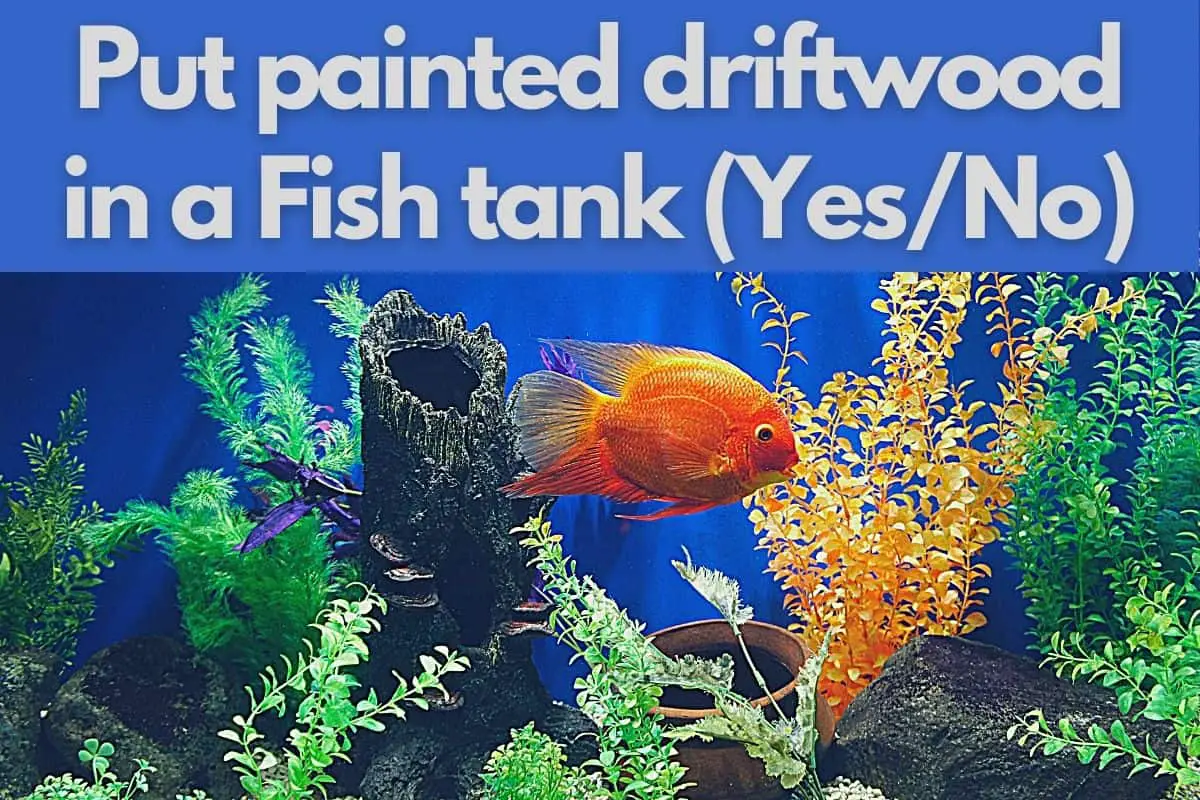As driftwood spends a sizeable amount of time underwater, its surface gets treated by time, salt, water and lastly sun, endowing it with a unique natural look. As such, it gets a wide variety of use such as decoration, furniture and other applications.
One of the most popular uses is in fish tanks and reptile terrariums, giving the animals a natural decoration for their place of residence. But besides decorating, it also serves a purpose as a place to move around on, hide, and in some cases even a food source.
Can I paint or stain driftwood for my aquarium / terrarium?
There are different kinds of materials used to treat wood – oil, latex, water based paint, and different staining formulations. Painting and staining the wood has the same purpose – coating the exterior in a protective layer, and changing the appearance of the driftwood. In theory, this should be beneficial, as the layer of paint or vanish will not allow the water in an aquarium or air in a terrarium to react with the driftwood, potentially prolonging its lifespan.
In theory, this sounds great, giving your driftwood a colorful finish and enclosing its surface in paint to protect it. But in practice, you should completely avoid treating the wood with paint or any other chemicals if you plan to use it in an aquarium or terrarium. The problem is that the coating will release chemicals into your enclosure and be potentially toxic and even lethal to your animals. This is more so true in the case of an aquarium, as the water will leach the compounds into itself in larger quantities. While in the case of a terrarium, there is no water to leach out the chemicals, as the reptiles move, crawl and claw around on the painted driftwood, they will peel of the coating, exposing and even ingesting it, which again can be toxic or lethal to them.
Aquarium safe paint and clear sealants do exist, but these are generally also not recommended, as they can have a hard time properly binding to wood. So your best bet is to completely avoid using paint, varnish or stains for driftwood if you plan to use it in a fish tank or terrarium.
How do you clean driftwood for a terrarium?
In prior texts we have already covered the process of preparation of driftwood for use in an aquarium. The process is largely similar for a terrarium, so we will give a brief overview on what to do.
Firstly, collect driftwood from a clean source of water, away from any pollution and man-made structures to avoid the chance of driftwood being imbued with toxic chemicals. Once you have found a piece of driftwood you like, inspect it for insects, and shake it to remove the loose dirt from it.
Once you’ve taken it home, clean it with a hard brush and a steady stream of water. Using soap here is optional, but use something mild just to remove any stubborn dirt, refrain from harsh chemicals. After a thorough cleaning, inspect for any major signs of rot and loose pieces, and remove them with proper tools.
The next step is sanitizing the driftwood. This can be accomplished by either boiling it at 200°F for 2 hours or by placing it in a 9 to 1 solution of water to bleach for a few hours. Keep in mind that after bleaching the wood, you should wash it thoroughly again and let the beach evaporate for a few hours. Finally, the last step is drying driftwood.
It’s best to let nature do the job, by placing the wood in a dry, windy and sunny place for a few days (depending on the size, thickness and how waterlogged the wood was). You can speed this process up by baking the driftwood, on 200°F for around 2 hours. But keep an eye on it, as you don’t want it to start cindering and making a fire.
After all the steps, your driftwood is ready and safe to use in a terrarium, and as mentioned, you shouldn’t treat it with paint or other chemicals.
Will driftwood rot in a terrarium?
Rotting and decay is an inevitable process, even when it comes to driftwood. Bacteria and fungi colonize its surface and decompose the organic compounds, leading to the deterioration of the material. There are many factors at play when it comes to the decay of driftwood. The two main factors are the type of wood (softwood deteriorates faster than hardwood) and the humidity of the environment it’s placed in (driftwood deteriorates faster when submerged in water).
The main signs of rotting driftwood would be increasing softness of the wood, pieces starting to flake off and in some cases even large fractures can occur. In rare cases, it can even have an off-putting smell, akin to rotten eggs.
As a terrarium is a dry place, usually with minimal humidity there isn’t a lot of stress driftwood has to endure. As such, a properly inspected and prepared can last a sizeable time without showing any major signs of deterioration, despite not being protected with paint or other kinds of chemicals. In some cases, you can expect the piece of driftwood to even last for a decade, if you don’t get bored of it sooner.

